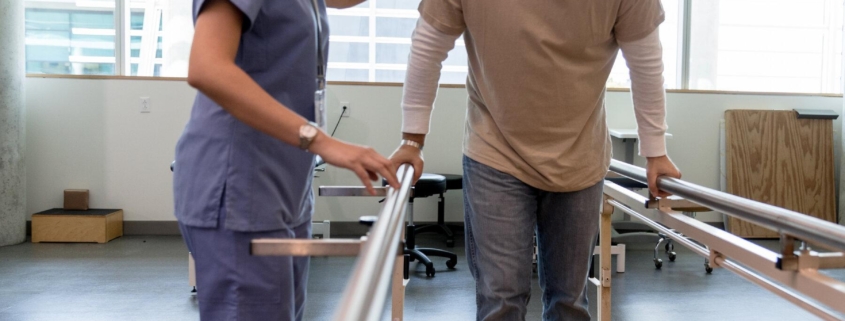
Physical Therapy
Overview
Physical therapy (PT) is a health care profession primarily concerned with the remediation of impairments and disabilities. It focuses on the promotion of mobility, functional ability, and quality of life through physical intervention, examination, diagnosis, and patient education.
PT is suited for individuals of all ages who have medical conditions, illnesses, or injuries that hinder their standard abilities to move and function. Physical therapy can be a standalone option, or it can support other treatments. With a tailored program, PT can assist patients to return to their prior level of functioning, while also encouraging lifestyle changes to prevent further injury and enhance overall health and wellbeing.
Types of Physical Therapy
The field of physical therapy is broad, with various specialties including:
-
- Orthopedic Physical Therapy: Primarily treats musculoskeletal injuries, involving muscles, bones, ligaments, fascias, and tendons.
-
- Geriatric Physical Therapy: Helps older adults to manage age-related conditions such as arthritis, osteoporosis, balance disorders, and joint replacement.
-
- Neurological Physical Therapy: Assists individuals with neurological disorders or diseases like Alzheimer’s, ALS, brain injury, cerebral palsy, spinal cord injury, stroke, and multiple sclerosis.
-
- Cardiovascular and Pulmonary Rehabilitation: For those with cardiovascular diseases (such as post myocardial infarction) or pulmonary diseases (like COPD and cystic fibrosis).
-
- Pediatric Physical Therapy: To help early detection of health problems and promote motor skills, strength, and function in children.
-
- Sports Physical Therapy: Designed for the treatment and prevention of injuries related to sports and exercise.
Indications for Physical Therapy
Physical therapy may be needed in the following instances:
-
- Pain management
-
- To improve mobility
-
- Recovery from stroke or paralysis
-
- Recovery from injury
-
- Improve balance
-
- Manage age-related issues
-
- Manage heart and lung diseases
Diagnosis and Evaluation
Physical therapists traditionally perform an initial examination to diagnose the patient’s condition and lay out the necessary treatment plan. This can include, but is not limited to, a review of medical history, a physical examination, and certain diagnostic tests.
Treatment Options
A physical therapist will utilize a variety of techniques and modalities to treat their patients. These may include:
-
- Special exercises
-
- Hands-on therapy
-
- Education about a condition and its management
-
- Advice on self-management
Living with Ongoing Physical Therapy
The purpose of physical therapy is to help patients regain physical strength and functionality. Living with ongoing PT might involve regular exercises and sessions with the therapist, a healthy lifestyle, diet, and medications (if necessary). It is also crucial to maintain a positive mindset as therapy can be an ongoing process for some.
When to Seek Help
If you’re experiencing pain, difficulty moving, balance problems, or have suffered an injury, or if you have a condition that impacts your mobility, consulting a physical therapist could be beneficial. As healthcare professionals, they are equipped with the knowledge and skills to improve and manage such conditions.
Physical therapy plays an integral part in health management, and it involves an individual’s detailed understanding of their condition and therapy. It’s a holistic approach where the patient and the physical therapist need to work together to overcome the challenges towards reaching the ultimate goal – achieving optimal physical function and health.
